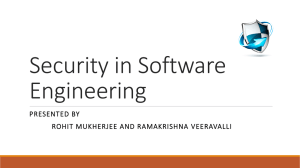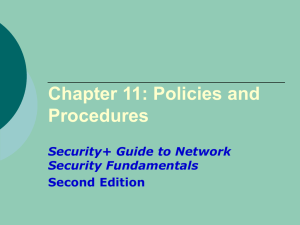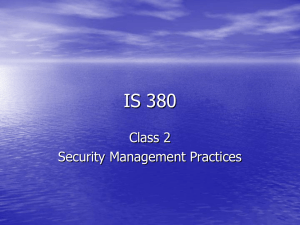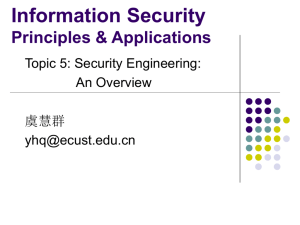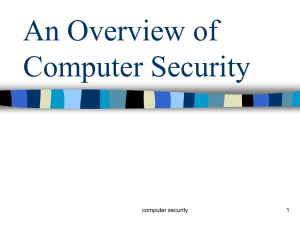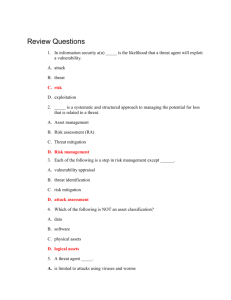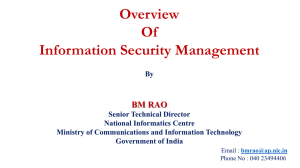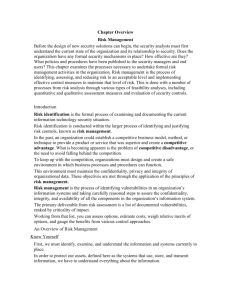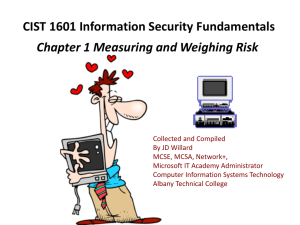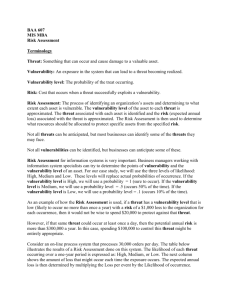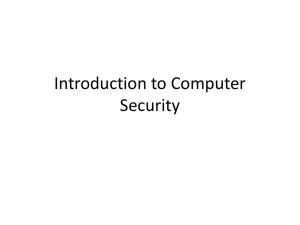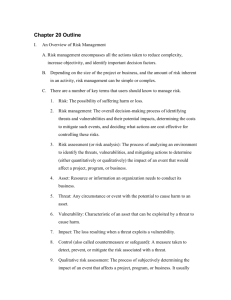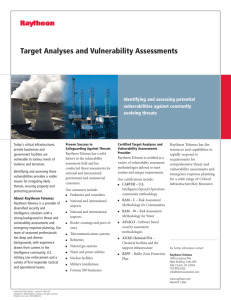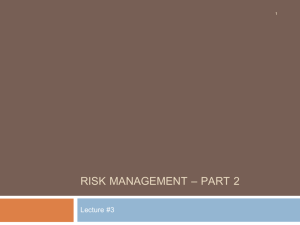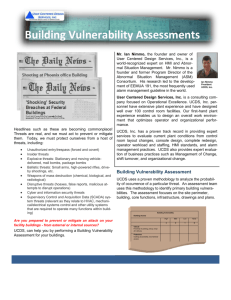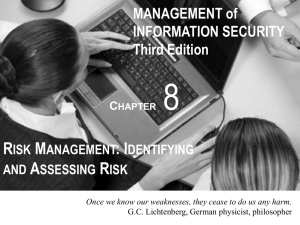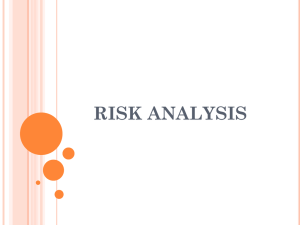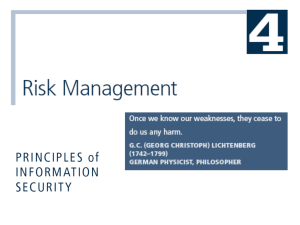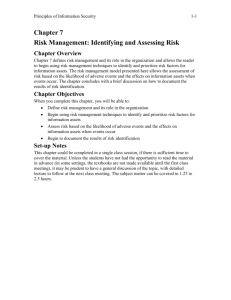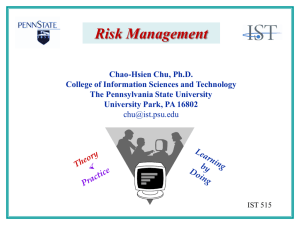CPSC 6126 Computer Security
advertisement
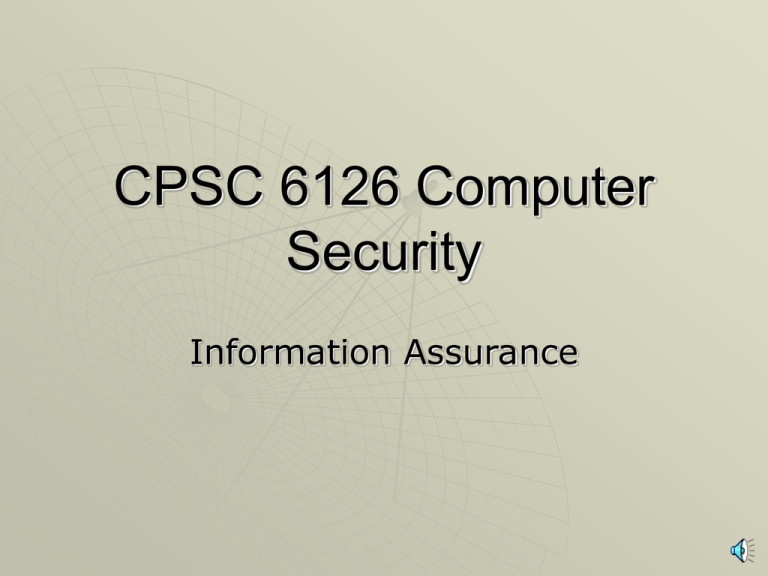
CPSC 6126 Computer Security Information Assurance Is there a Security Problem in Computing? Risks involved in computing Goals of secure computing: confidentiality, integrity, availability Threats to security in computing: interception, interruption, modification, fabrication Controls: encryption, programming controls, operating systems, network controls, administrative controls, law, ethics What does “Secure” mean? Protecting computer-related assets Information Systems • H’ware • S’ware • Data • People (& procedures) Computer Security Information Assurance What does “Secure” mean? Control Risk of Computer Security • Learn about threats to computer security • Understand what causes these threats by studying how vulnerabilities arise in the development and use of computer systems. • Survey controls that can reduce or block these threats. • Develop computing style that balances security and risk. Principle of Easiest Penetration • “An intruder must be expected to use any available means of penetration. The penetration may not necessarily be by the most obvious means, nor is it necessarily the one against which the most solid defense has been installed.” 1.2 Attacks (threats, vulnerabilities and controls) Vulnerability – weakness in the security system that might be exploited to cause loss or harm. Threat – set of circumstances that has the potential to cause loss or harm. Control – protective measure that removes or reduces the vulnerability A threat is blocked by control of a vulnerability 1.2 Attacks (threats, vulnerabilities and controls) Threats • Interception : unauthorized party has gained access to an asset • Interruption : asset becomes lost, unavailable, or unusable • Modification : asset is tampered with • Fabrication : counterfeit objects are added to the asset 1.2 Attacks (method, opportunity, and motive) Method – the skills, knowledge, tools, and other things with which to be able to pull off the attack Opportunity – the time and access to accomplish the attack Motive – a reason to want to perform this attack against this system 1.3 The Meaning of Computer Security Security Goals • Confidentiality (secrecy, privacy) : ensure that assets are accessed only by authorized parties. • Integrity : assets can be modified only by authorized parties in authorized ways. • Availability : assets are accessible to authorized parties at appropriate times (opposite of denial of service) 1.3 The Meaning of Computer Security Vulnerabilities • Hardware Interruption (denial of service), modification, interception (theft), fabrication (substitution) • Software Interruption (deletion), modification, interception (theft), fabrication • Data Interruption (loss), modification, interception, fabrication Principle of Adequate Protection: Computer items must be protected only until they lose their value. They must be protected to a degree consistent with their value. 1.3 The Meaning of Computer Security Other Exposed Assets • Networks • Access • Key People 1.4 Computer Criminals Computer Crime – any crime involving a computer or aided by the use of one Amateurs Crackers (NOT hackers) Career Criminals 1.5 Methods of Defense Harm occurs when a threat is realized against a vulnerability Need to neutralize the threat or close the vulnerability • Prevent it by blocking the attack or closing the vulnerability • Deter it by making the the attack harder • Deflect it by making this target less attractive • Detect it (as it happens or after the fact) • Recover from its effects 1.5 Methods of Defense Controls Multi-pronged approach Encryption Software controls (internal program controls, independent control programs, operating systems and network system controls, development controls) Hardware controls Policies and Procedures Physical controls 1.5 Methods of Defense Effectiveness of Controls • Awareness of problem • Likelihood of Use Principle of Effectiveness – Controls must be used-and used properly- to be effective. They must be efficient, easy to use, and appropriate. • Overlapping controls • Periodic Review Principle of Weakest Link – Security can be no stronger than its weakest link.
